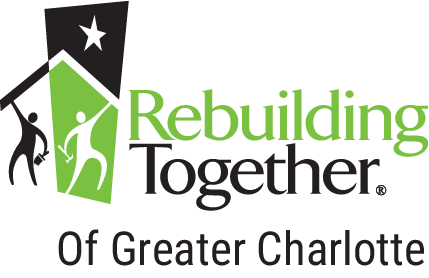Millions of Low-Cost Homes Are Deteriorating, Making the U.S. Housing Shortage Worse
This story, highlighting critical repair work by Rebuilding Together Montgomery County, was reported by NPR’s Jennifer Ludden and Marisa Peñaloza.
Pat Haskins’ red-brick home in Silver Spring, Md, is about as old as she is: 72. There are family photos everywhere and walls painted her favorite color: “Purple, purple purple,” she laughs, just like her toenails and slide-on sandals.
But aging together — she and her house — has been hard.
A few years ago, her basement started flooding when it rained. “I would come down the stairs and before I could get to the bottom step, it would come right up past my ankle,” she says. A bathroom floor sagged and the back porch was falling apart. At the same time, it was harder to get around as diabetes ravaged her partner, James Harris. He has kidney failure and has lost his eyesight and one leg.
Sitting outside on their steps, Haskins demonstrates how for years they struggled together to get him into the house. “So he would sit down and just go one by one,” she says, hauling himself up one step at a time, while she grabbed under his arms to pull him up.
“That's why I have arthritis in my back, you know, because of helping him,” she says.
They desperately needed a wheelchair ramp, among other fixes. But like so many in older, cheaper housing, Haskins couldn't afford it. She was an elementary school science teacher with a small pension, but says she used that $30,000 to put her daughter through college.
“I don't regret it,” she says, “but if I had kept the money, I wouldn't need the help that I need.”
Millions of people across the U.S. live in places that are falling into disrepair, even becoming uninhabitable, making a massive shortage of affordable housing worse. They are disproportionately lower-income and Black or Hispanic, and many are seniors on fixed incomes. But a patchwork of repair programs — federal, state, local and nonprofit — are largely underfunded, with years-long waitlists. It’s a crisis that threatens people’s health and lives, yet can be invisible from the outside.
“We don't see the black mold inside the house that gives a kid asthma. Or the fact that inadequate air conditioning means that an elderly couple is suffering from heatstroke,” says Todd Swanstrom, a public policy professor at the University of Missouri-St. Louis.
Haskins doesn’t know where she and Harris would go if they had to leave, and their only plan is to stay put forever. So she’s grateful they did get repairs from a national nonprofit called Rebuilding Together, which saw referrals for help in Haskins’ area spike 400% last year.
“We are seeing it increase in terms of the need, but also the issues are becoming more significant,” says Chloe Bernardi, who heads the group’s local chapter in Maryland's Montgomery County. “We go in maybe for one issue and we can identify four or five other issues that, if we're not fixing then and there, will become more magnified.”
She says one older couple, living with a son and grandchildren, spent a year catching rain in buckets because of a hole in the roof. Another woman, 100-years-old and living with a relative, had been burning through $700 a month of oil to heat her house last winter before Bernardi’s group replaced her broken HVAC system.
To read the remainder of the story on the need for critical home repairs to more fully address America’s housing problem, please visit NPR.

